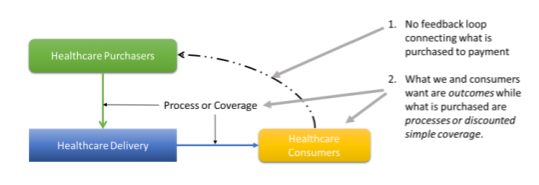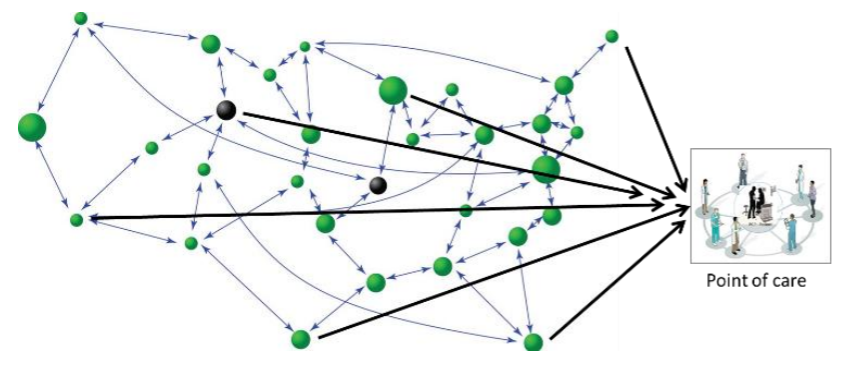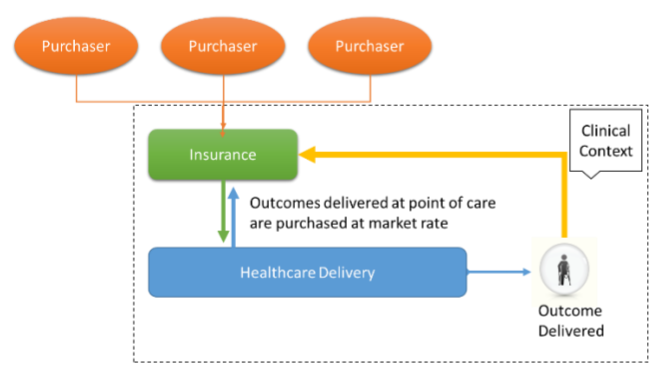OPINION- The relationship between purchasers, providers, and consumers is dysfunctional.
- The patient is a user, not a customer. He or she has limited input or control.
- Whether fee for service or per member per month bundles, underneath it all we pay for process when what patients want and need are better outcomes. When we do track outcomes, we use industrial style fixed metrics.
- There are no meaningful feedback loops to align delivery system actions to outcomes.
 Of course, this is old news.
Of course, this is old news.
The underlying reason healthcare cost is out of control is we have ignored two foundational realities.
- Healthcare lives in an environment of Social and Biological Complexity
- Management of complex environments requires an equally adaptive complex systemi
The insurer’s challenge in this complex environment is to do more than simply aggregate risk, project trends, and adjust premiums. That approach escalates cost and introduces non-productive process. While insurers have required best practices that might standardize and improve care, that doesn’t help as much as we believe. When implemented from the health plan side, it adds process and unintended consequences that limit appropriate variation. The net effect is cost and frustration. The answer lies in rethinking the role of health insurance to be more than a risk aggregator. We need an adaptive insurance delivery model that is a match for the environment it serves. An earlier article in this series, Purpose Driven Self-Organizing Healthcare, presented a high-level sketch of what an adaptive delivery system might look like.

That system self-organizes around the point of care to form clinical microsystems with access to an open distributed network of supporting services. The focus is on each individual patient. This services network supports those delivering care and adapts to each patient’s needs.
An adaptive delivery system needs an adaptive insurance delivery model that will:
- Be a service on the network
- Pay for outcomes delivered at the point of care
- Develop and support adapting outcome based payment systems
- Clinically aware benefit plans
- Locally adaptive outcome measures
- Create radical real-time transparency based decision supports for patients and practitioners
- Provide effective feed-back loops by becoming the patient resource for navigating the system
- Support self-organization by selecting best results (cost and quality) instead of specifying best practice.

The purpose of this insurance delivery model is to support sustainable healthcare. We need more than simple industrial efficiency. We also need direction and momentum that comes with innovative growth and productivity.
The good news is this can be carried out incrementally, in fact a successful adaptive model can only be carried out incrementally. Complex systems continuously adapt so we must continuously test, learn, and adjust. Each step must pay for itself and deliver major dividends in the future.
The adaptive insurance model and supporting technology, will deliver real-time transparency of practitioner and delivery system performance leading to new changes.
- Management shifts toward actuality with less evidence based statistical speculation
- Rapid identification and testing of new opportunity or misadventure
- Virtualized team based payment
- Ad hoc and/or virtual collaboration
This is very high level and the devil is in the details. Making this happen will need a special “innovation accelerator” where each step is tested and implemented only if workable and delivers on expectations which include paying for itself and delivering value at the point of care. Experience is shared openly so we succeed together. Bringing people together to design and implement a better system is the audacious goal of Curandi. There are opportunities to move the ball in every community and every health plan type. Practitioners can do more of what they entered this profession to do, get more of the respect they deserve and not sacrifice income. Health insurers can have a new relationship with members and be more profitable at the same time we lower cost. We can pare down the mountain of cost and process that adds little value at the point of care. At the end of the day, healthcare is a human enterprise, we will succeed best by keeping it so.
Dr. Rohwer is a founder and former CEO of PH Tech. He is the current Executive Director of Curandi, a not-for-profit organization working to heal healthcare. He can be reached at [email protected].
i Ashby’s law of Requisite Variety
